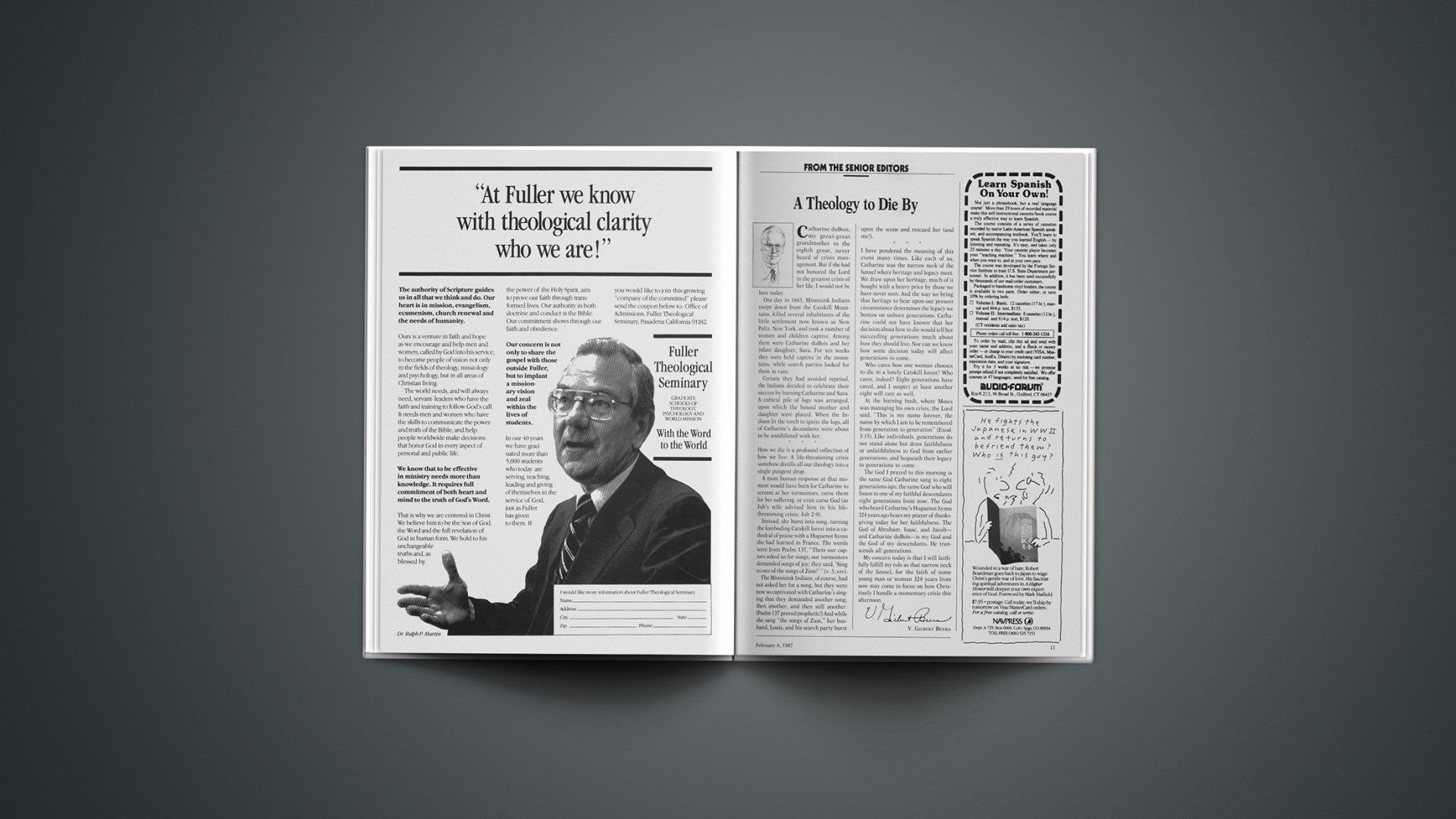Solid promises in the infallible Scriptures point definitely to the second coming of Christ.
Yet human efforts to predict the time of the Return definitely have been anything but solid throughout history. Already in his First Epistle to the Thessalonians, the apostle Paul had to face the problem. Believers who were dead sure that Christ’s return was just around the corner needed to be told that “the day of the Lord” would come unexpectedly, “like a thief in the night” (1 Thess. 5:2).
During the Middle Ages there were countless individuals who, through study of Scripture and current events, felt certain they could accurately predict the arrival of the End. One of these was Gerardo of Borgo San Donnino, a follower of the Benedictine abbot Joachim of Fiore (ca. 1135–1202). Joachim taught that all history could be divided into three 40-generation periods, an Age of the Father (the Old Testament), an Age of the Son (the New Testament era), and a forthcoming Age of the Spirit (to be marked by the full realization of the gospel). Consequently, Gerardo was so confident in this scheme and in his own ability to discern the signs of his times that he offered the year 1260 as the date when the “radical turn” to the Age of the Spirit would occur.
During the Reformation era a combination of intense spiritual struggle and momentous political events led many to speculate on the end of the world. A study of Daniel 12, for example, convinced the radical Reformer Melchior Hofmann that his own day was “the time of the end.” Hofmann believed that the armies of the Muslim Turks, which menaced Europe for several decades at the start of the sixteenth century, were the biblical Gog and Magog. And so he confidently asserted that in 1533 he would be imprisoned for six months in Strassburg, and then the Lord would return. The first part of his prediction was fulfilled, but not the second. Followers of Hofmann occupied the city of Munster in Northern Germany in 1534, because they believed the Holy Spirit had directed them to take up the sword as a sign of the End.
Such apocalyptic speculation was not limited to fringe groups, however. Martin Luther, for one, frequently expressed the opinion that the End was very near, though he felt it was unwise to predict an exact date. Christians, he said, no more know the exact time of Christ’s return than “little babies in their mothers’ bodies know about their arrival.” But in January 1532 he could still give the opinion that “The last day is at hand. My calendar has run out. I know nothing more in my Scriptures.” Later he made several similar statements.
“Certainty” about the Second Coming has been a major feature of American Christian life as well. At the beginning of the nineteenth century, many Americans felt the events of the French Revolution, the rise of Napoleon, and the outbreak of warfare in Europe heralded the end of the age. One of these was the distinguished Christian layman Elias Boudinot of New Jersey, a leader in the Continental Congress, a confidant of George Washington, and the first president of the American Bible Society. In 1802 it was obvious to him that Napoleon’s restoration of religious freedom in France amounted to “the resurrection of the Witnesses” foretold in the Book of Revelation. When Napoleon threatened to invade Britain, Boudinot thought the end could not be more than 50 years away.
The most famous American prediction of this sort came from William Miller (1782–1849), who studied the Book of Daniel for two years and concluded that Christ would return in 1843. Aided by the enterprising publicity efforts of Joshua V. Himes (1805–95), Miller gained thousands, if not hundreds of thousands, of followers. But when 1843 passed, and then when the final readjusted date of October 22, 1844, came and went, there was much disillusionment. In the wake of this “Great Disappointment,” some of Miller’s followers reinterpreted that date spiritually as the time when Christ entered the heavenly temple to inaugurate a new phase of his saving work. And that reinterpretation figured in the rise of the Seventh-day Adventists.
The verdict of history seems clear. Great spiritual gain comes from living under the expectation of Christ’s return. But wisdom and restraint are also in order. At the very least, it would be well for those in our age who predict details and dates for the End to remember how many before them have misread the signs of the times.
By Mark Noll, professor of history at Wheaton College (Ill.).










